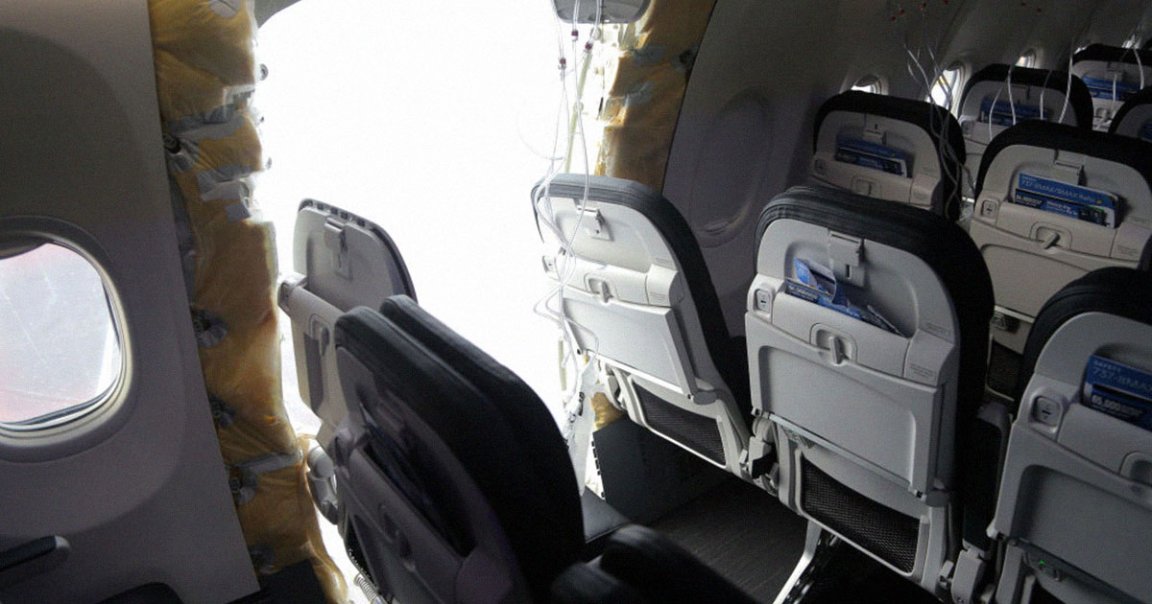
Last week, passengers on board an Alaska Airlines flight were rattled by a terrifying incident involving a “door plug” being ripped out of the Boeing 737 MAX 9 jet that was taking them from Portland, Oregon, to Ontario, California.
The following “violent explosive decompression event,” as National Transportation Safety Board chair Jennifer Homendy later described it, forced pilots to return back to the ground — though luckily, nobody got seriously injured.
As regulators pore over the data — the offending door plug has since been recovered alongside a fully intact iPhone from one of the passengers — new questions have arisen over the events that led to the incident.
As The American Prospect reports, the plug door, which was designed to seal a hole in the fuselage that’s used in some other configurations as a door opening, was possibly the result of “cost-cutting production techniques to facilitate cramming more passengers into the cabin.”
The plug door was a fix to still meet Federal Aviation Administration requirements in the case of high-capacity passenger seat layouts without having to make major changes to the fuselage design.
“There are a lot of different ways to configure an aircraft to pack in air travelers like cattle, but it changed the calculus for manufacturers to meet standards,” airline industry expert Bill McGee told the Prospect.
Worse yet, court documents obtained by The Lever suggest that former employees at Boeing spinoff Spirit AeroSystems, the company Boeing subcontracted to manufacture these plug doors, told Boeing officials about an “excessive amount of defects.”
Instead of heeding these warnings, internal correspondence reviewed by The Lever suggest that officials told these former employees to falsify records.
One employee told a coworker that “he believed it was just a matter of time until a major defect escaped to a customer,” per the report.
As more data comes to light, the situation is starting to look grim for Boeing — and the timing couldn’t be worse. The company has already been through several crises over the last couple of years, following two fateful crashes in 2018 and 2019 involving 737 MAX 8 aircraft that left 346 people dead.
As for the later model, according to the New York Times, Alaska Airlines instructed MAX 9 planes not to fly over water due to warning lights indicating a loss of cabin pressure, though it’s unclear if the latest incident was related to this issue.
In August, Boeing said it had identified quality problems related to parts supplied by Spirit. However, the issue was related to the planes’ aft pressure bulkheads, not plug doors.
After Boeing and Spirit jointly announced an expanded investigation, the FAA said that there was “no immediate safety concern” as a result of the defective bulkheads.
So who’s at fault following the latest incident? Was it Boeing, which subcontracted out the plug door, or did regulators fail to enforce rules that could’ve stopped the latest incident from happening in the first place? Or perhaps a mix of both?
The investigation has only begun, and we’re only starting to get a clearer picture of the outrageous accident.
More on the incident: Schoolteacher Finds Door Plug That Fell Off Boeing 737 in His Backyard